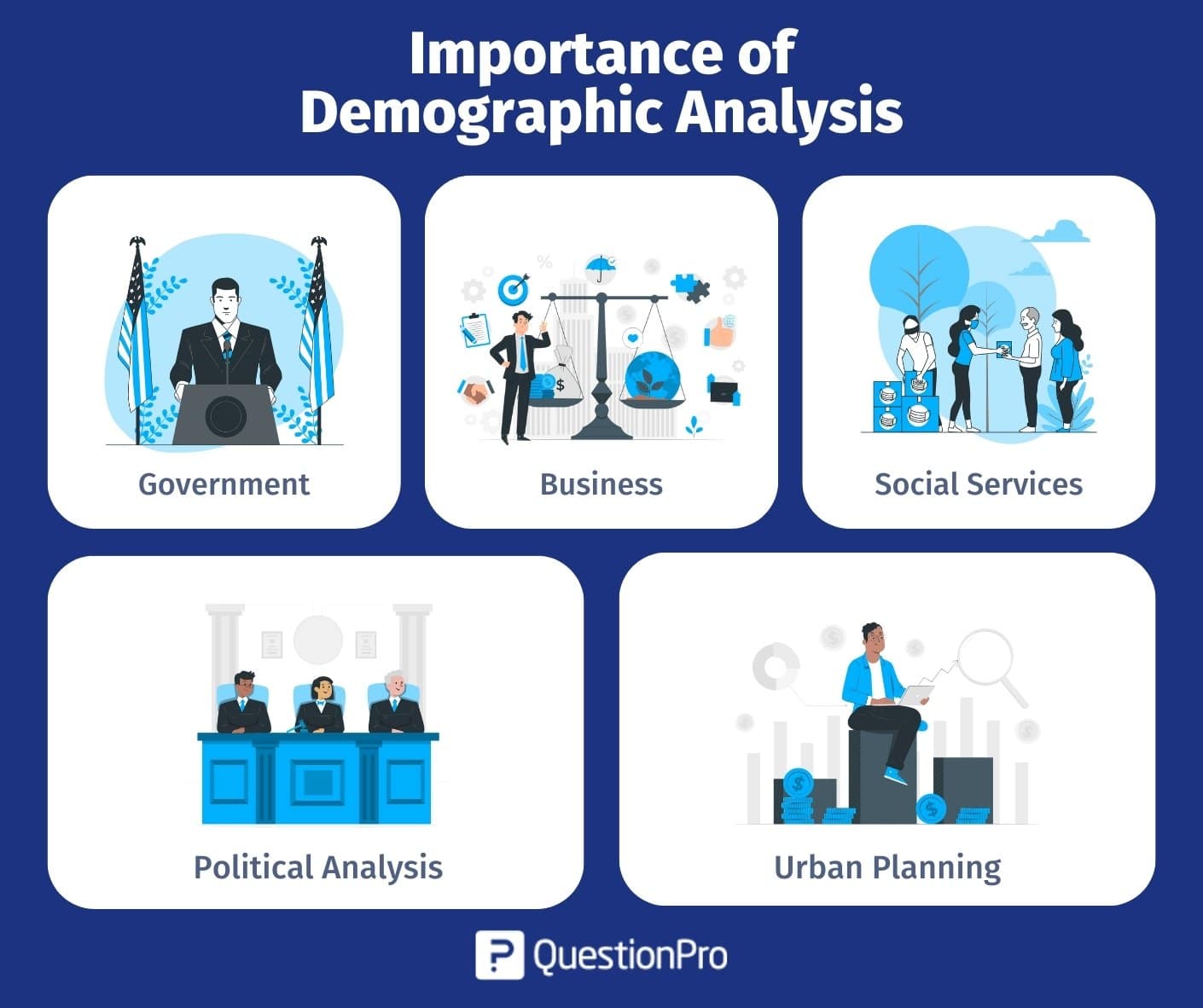
Demography studies human populations and how their numbers change due to things like migration, births, and deaths. Demography means “describing people” in Greek, where demographic analysis comes from.
Businesses often use it as a marketing tool to figure out how to reach customers best and what they do. By using demographics to divide a population into groups, companies can determine the size of a potential market.
So, this field is about the characteristics of the population. It looks at the ratio of men to women, the age structure, the composition, how people are spread out in space, and the population density.
Also, there is sometimes a difference between “formal demography” or “demographic analysis,” which is the statistical analysis plan of population parameters and their changes, and “population studies,” which is the study of the causes and effects of changes in the structure of the population in a broader context and relation to other phenomena and processes.
This blog will define demographic analysis, its importance, and the methods that can be used.
Definition of demographic analysis
Demographic analysis is the process of collecting and studying information about the general traits of a group of people. It is the study of a group based on age, race, and gender.
This report presents statistical data on employment, education, income, rates of marriage, rates of birth and mortality, and other socioeconomic indicators.
The population estimates from demographic analysis don’t depend on the decennial census. The results are used to estimate the net coverage error, which is the percent difference between the number of people counted in the census and the number of people estimated by the DA.
Demographic analysis is a way for the government, political parties, and companies that make consumer goods to get information about how people live. When conducting demographic analysis, it’s crucial to identify and understand your target audience to tailor your marketing strategies effectively.
Polls about everything, from age to favorite toothpaste, help the government and businesses figure out who the public is and what they need and want. The government census is the biggest demographic survey of people’s lives every ten years.
The market segment analysis revealed that our primary target demographic for the new product is young adults aged 18-34 with a strong preference for eco-friendly products. Today, the demographic is also used as a noun.
For example, advertisers on TV are always trying to figure out how to reach “the 18-to-24-year-old demographic.”
Importance of demographic analysis
Demographic analysis is important because it shows what a population is like and how it might change in the future. This information can be used in many different fields to help people make smart choices.
Demographic analysis often includes examining the distribution of various factors, such as age, gender, and marital status, to understand population trends and characteristics better. Some examples of why demographic analysis is essential are:

- Government: Demographic data can help make policy decisions and decide where to put resources.
For example, a government might use demographic data to plan for what an aging population will need in the future.
- Business: You can use demographic research information to find market opportunities and target specific groups of customers.
For example, a company might use demographic data to focus its advertising on a certain age group or income level.
- Social services: Population data can be used to determine what certain groups of people need and meet those needs.
For example, a social service organization might use demographic data to find areas with many low-income families and focus its services there.
- Political analysis: Demographic information can be used to forecast election results and comprehend the voting preferences of various population groupings.
- Urban planning: Cities can use demographic data to plan for their growth and development in the future.
For example, a city might use demographic data to plan for the housing needs of its growing population in the future.
Methods of demographic analysis
Different methods of demographic analysis can be used together or separately, depending on the research question, the amount of data available, and the research setting.
Demographic analysis revealed that age and education level significantly influenced individuals’ employment status in the study population. The demographic analysis employs a variety of techniques, such as:
Census data analysis
For this method, data from national or regional censuses are used. It tells you how big a population is, where it is, and its characteristics.
Surveys
Surveys can provide extensive demographic characteristics data on specific population groupings. Phone, mail, or in-person surveys can collect data on income, education, and health data.
Vital statistics
This method analyzes births, deaths, and other vital events to analyze population increase. This data can calculate population growth, birth and death rates, and other demographic indices.
Analyzing migration statistics
This approach analyzes migration and population distribution change data from within and across countries. This data can reveal where people relocate and why.
Modeling and forecasting
Using past and present data, mathematical models forecast population patterns. These models can predict demographic indices like population increase, age structure, and prospective obstacles and opportunities.
Multivariate Analysis
Examining the relationships between multiple demographic variables simultaneously to gain a more comprehensive understanding of population characteristics.
Big Data analysis
This method uses big data sets from different places (like social media, web scraping, etc.) to determine a population’s patterns, behaviors, and traits.
Conclusion
Demographic analysis is used to explain the distribution of characteristics in a society or community to comprehend them, make policy suggestions, and predict the future of a society or group.
Demographic analysis is important because it gives valuable information that can be used to make good decisions in business, government, and social services, among other places. It helps people understand the characteristics of a population and how it might change in the future, which is important for making decisions.
The QuestionPro research suite might help with demographic analysis by collecting and analyzing data on population variables, including age, gender, income, education level, and more.
QuestionPro’s survey software can create and distribute surveys and polls to get this data. Demographic features can be used to segment and evaluate the acquired data to understand population groupings’ traits and preferences better.
Advanced analytics and visualization features from QuestionPro make data analysis more efficient and productive.







